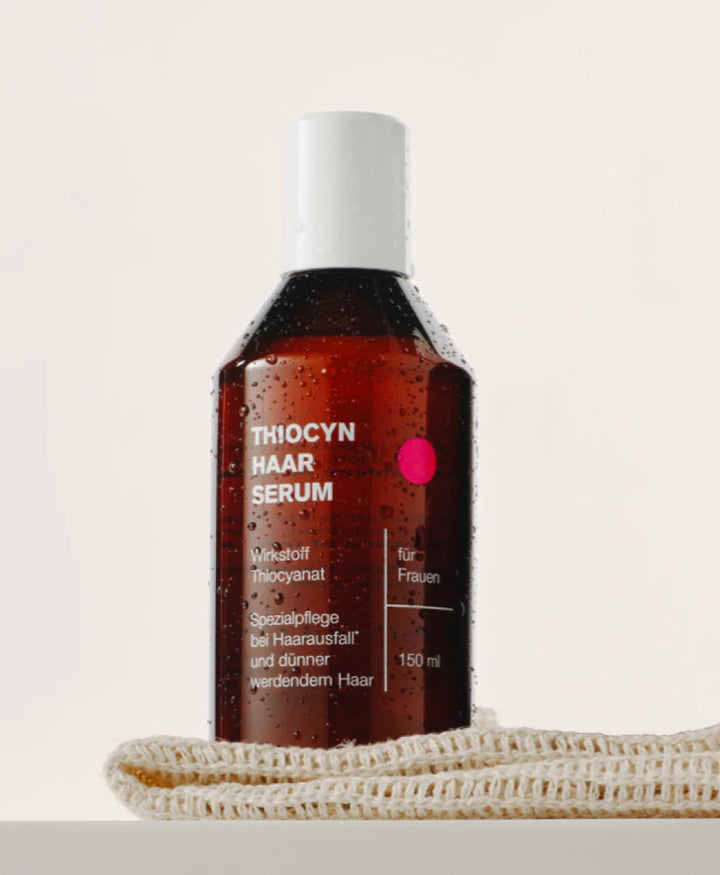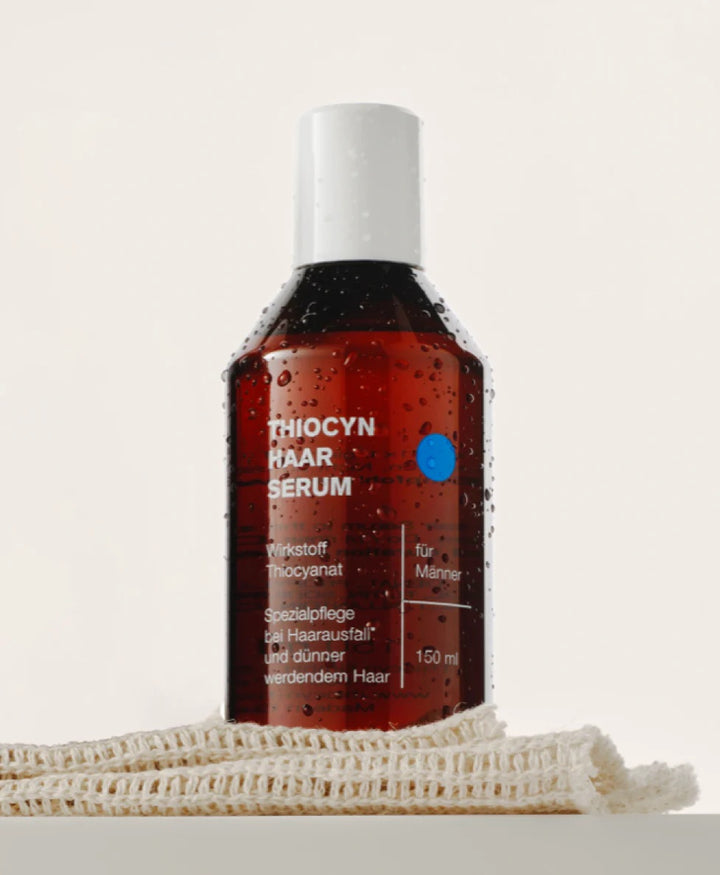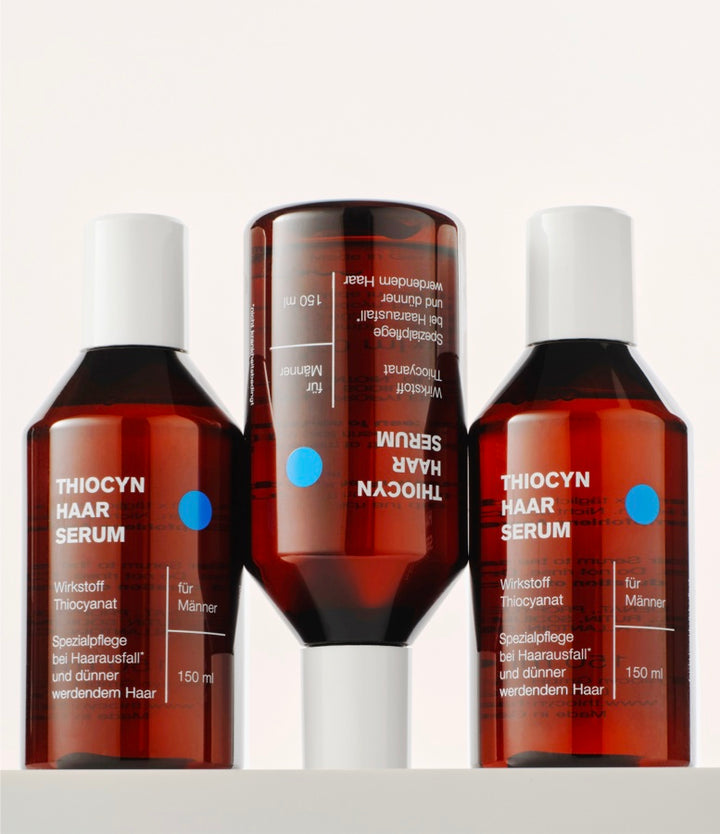| 04. July 2023
Androgenetic alopecia

What actually happens to the man?
- Androgenetic hair loss or androgenetic alopecia affects men – but also women.
- The trigger is the male sex hormone dihydrotestosterone (DHT).
- The hair becomes miniaturized and thins out.
- The typical hair loss pattern for men: receding hairline and tonsure.
- The active ingredient thiocyanate does not interfere with any hormone-controlled metabolic processes.
Androgenetic alopecia*, scientifically known as androgenetic hair loss, is a widespread hair growth disorder. In fair-skinned people, this form of hair loss affects one in two men, but also at least one in five women. As the name suggests, androgens (male sex hormones) play an important role, but genetic predisposition also plays a significant role. What can men do? What treatment options are available?
Causes and process of androgenetic hair loss
Among hair experts, the prevailing view is that men with androgenetic alopecia do not have an excess of male sex hormones ("too much testosterone"); those affected have androgen levels within the normal range. However, the hair follicles at the temples and on the back of the head are very sensitive to a derivative of testosterone: dihydrotestosterone (DHT). DHT constantly delivers strong growth impulses to the hair, or more precisely, the hair follicles, and achieves exactly the opposite. The hair cycle is overdriven.
The result is well-known. With each new hair cycle, the hair becomes smaller and more downy, eventually disappearing completely until a receding hairline and a tonsure develop. Eventually, the bald patches on the forehead and back of the head merge, resulting in a bald head. This process can last for several decades. The Hamilton-Norwood scale classifies androgenetic hair loss in men into seven stages (I to VII). In women, however, there is increasing thinning of the hair in the vertex area, and small hairless areas develop on the top of the head along the parting.
Hair loss on the father's side?
The genes for androgenetic hair loss are passed on from both father and mother to their children. The key factor, the "androgen receptor," is inherited via the mother's X chromosome. Young men concerned about androgenetic hair loss should therefore look not only at their father's head, but also at their maternal grandfather's head.
Remedy for androgenetic hair loss*
Even though researchers are already working in this direction – keyword “gene editing,” i.e. controlled changes to hereditary factors – the genetic predisposition for hair loss cannot currently be corrected.
There are, after all, a handful of active ingredients, some over-the-counter and some prescription medications, that can slow or reduce hair loss* and even stimulate new hair growth in the case of androgenetic alopecia. However, prescription and hormonally active medications are not a solution for many sufferers due to the known side effects of treatment.
Active ingredient thiocyanate
Since remedies that halt hereditary hair loss must be used permanently, it is recommended to choose a highly effective yet well-tolerated product with no known side effects. Thiocyn Hair Serum does not interfere with any hormonally controlled metabolic processes. It is based on the natural molecule Thiocyanate. The treatment can be performed on both women and men.
Alopecia or hair loss?
The dermatological term "alopecia" is often equated with hair loss. However, this is not entirely accurate. Alopecia is the result of excessive effluvium (Latin for "hair loss") and means hairlessness. Alopecia can be temporary or permanent. Therefore, doctors distinguish between reversible alopecia, in which hair regrows, and irreversible, scarring alopecia, resulting from damage or destruction of the hair follicles in the scalp, which ultimately leads to hair loss or baldness. If the hair follicles are intact, there is always a chance that the hair will grow back.
READ BY 23,000 PEOPLE
Join 23,000 others and find out how to improve your hair health with great offers and discounts as well as helpful advice











